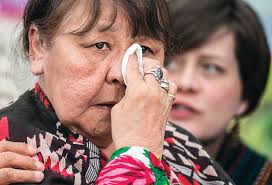The word “substance” may have a double-meaning when it comes to addiction. The basic meaning is obvious: the substance is a chemical that we want badly and pursue relentlessly. But the second meaning of “substance” is suggested by a well-documented phenomenon: the parallel between substance addictions and behavioural addictions.
The feelings, actions, and brain changes seen with compulsive gambling, sex addiction, porn addiction, and many eating disorders (e.g., binge-eating disorder) look very similar to those seen in substance addictions. The feelings and behaviours include craving, gorging, risk-taking, reduced inhibition and compulsive repetition. The brain changes include sensitization of the dopamine system and reduced interaction between the prefrontal cortex and certain subcortical regions (in specific contexts). Because attractive drugs and attractive activities are craved and pursued in similar ways, it might not be too far-fetched to give “substance” a second meaning. The substance common to drug addictions and behavioral addictions may be the feeling of wholeness, once lost, now regained.
 A substance is what fills up a space. The lack of substance equals, well, nothingness. When people talk about their addiction they often talk about a sense of profound emptiness, a psychological void, that gets filled by a something they can only get from what they’re addicted to. To replace a sense of nothingness with a sense of somethingness (what else to call it!) is more powerful than words like “pleasure,” “relief,” or “satisfaction” can possibly convey.
A substance is what fills up a space. The lack of substance equals, well, nothingness. When people talk about their addiction they often talk about a sense of profound emptiness, a psychological void, that gets filled by a something they can only get from what they’re addicted to. To replace a sense of nothingness with a sense of somethingness (what else to call it!) is more powerful than words like “pleasure,” “relief,” or “satisfaction” can possibly convey.
At first glance it seems that chemicals provide pleasure directly while certain behaviours provide pleasure through taking action, and that’s the whole story. But in real life, you need to take action to get those nice chemicals, to put them into your body, and that’s what the dopamine system is triggered by: not just reward but reward-seeking. Hundreds of studies have shown that dopamine release in the “craving centre” (the ventral striatum or nucleus accumbens) corresponds with effortful action, not with pleasure per se.
So whether we think we’re addicted to chemicals or to actions (behaviours) doesn’t much matter to the brain. Actions (like gambling) release dopamine because they are pathways to a monetary reward. Actions like shooting heroin release dopamine because they are pathways to a chemical reward. In both cases, the hook is a feeling state that springs from an action more than an outcome. To put it another way, it’s not really the heroin that you get addicted to. Heroin will bequeath satisfaction or pleasure. But what you get addicted to is the feeling of acquiring this special something: anticipating it, going after it, and getting it.
One of my favourite models of addiction (and one highly regarded in the field) is Robinson & Berridge’s theory of “incentive sensitization.” This phrase means that dopamine release in the brain (e.g., in the striatum) gets triggered, more and more predictably, by cues connected with the thing you’re addicted to. These authors specify that dopamine uptake signals wanting, not liking, a drug or other reward, and this has been a major contribution to our understanding of addiction. But to bring this understanding home, we have to clarify what incentive we’re talking about. Does “incentive” just mean urge, attraction, or motive? Just “wanting”? No, the incentive that powers addiction — what the brain gets sensitized to — is the availability of something you not only want but feel you need.
 Berridge has compared this urge to the desperation of a starving animal seeking food. So it may be useful to view substance and behavioural addictions as fulfilling biological needs, or at least their psychological
Berridge has compared this urge to the desperation of a starving animal seeking food. So it may be useful to view substance and behavioural addictions as fulfilling biological needs, or at least their psychological  expression. Whether we take pills, snort powder, smoke, or inject, we are putting something into our bodies. This “inputting” is a behavioural prototype. It’s primal. It’s how we eat. In the case of binge eating, the target of the behaviour makes obvious biological sense. But perhaps all behavioural addictions relate to biological needs: e.g., winning against competitors (gambling), sexual needs (obviously sex and porn addiction), even social inclusion
expression. Whether we take pills, snort powder, smoke, or inject, we are putting something into our bodies. This “inputting” is a behavioural prototype. It’s primal. It’s how we eat. In the case of binge eating, the target of the behaviour makes obvious biological sense. But perhaps all behavioural addictions relate to biological needs: e.g., winning against competitors (gambling), sexual needs (obviously sex and porn addiction), even social inclusion  (internet addiction) and resource acquisition (compulsive shopping). In my book, The Biology of Desire, I make the case that addiction serves symbolic goals. For example, the warm feeling you get from opiates symbolizes the warmth that comes from being hugged or cuddled (no small matter for us mammals).
(internet addiction) and resource acquisition (compulsive shopping). In my book, The Biology of Desire, I make the case that addiction serves symbolic goals. For example, the warm feeling you get from opiates symbolizes the warmth that comes from being hugged or cuddled (no small matter for us mammals).
This may all sound a bit abstract. But the feeling of emptiness we (addicts) feel when we don’t have, or can’t do, or can’t get the thing we’re addicted to is very concrete, and very palpable. It’s the feeling of an empty day that can’t be filled. It’s the total eclipse of purpose, when there’s no point in doing anything. This is what I mean by the absence of substance.
Many see addiction as an attempt to repair a rupture in attachment (as in child-to-parent attachment) or care (by a parent, lover or even oneself). Certainly these are biologically-grounded needs. Gabor Maté’s study  of addicts in downtown Vancouver, mostly aboriginal, mostly from foster homes, mostly abused or neglected in childhood, highlights the enormous holes in the lives of people with devastated attachment histories — holes filled by drug use. Bruce Alexander extends this idea of loss to groups cut off from their cultural roots and resources. What’s lost for these people isn’t just pleasure or
of addicts in downtown Vancouver, mostly aboriginal, mostly from foster homes, mostly abused or neglected in childhood, highlights the enormous holes in the lives of people with devastated attachment histories — holes filled by drug use. Bruce Alexander extends this idea of loss to groups cut off from their cultural roots and resources. What’s lost for these people isn’t just pleasure or  relief; it isn’t just something they like or want. Rather, it’s something they feel they need. In the words of Johann Hari, it’s connection itself. People who have lost this “something” walk around with a sense of their own emptiness, and it hurts like nothing else. By filling that emptiness, a drug (or habitual behaviour) becomes the main source, maybe the only source, of the substance they have gone without.
relief; it isn’t just something they like or want. Rather, it’s something they feel they need. In the words of Johann Hari, it’s connection itself. People who have lost this “something” walk around with a sense of their own emptiness, and it hurts like nothing else. By filling that emptiness, a drug (or habitual behaviour) becomes the main source, maybe the only source, of the substance they have gone without.

Leave a Reply to Marc Cancel reply